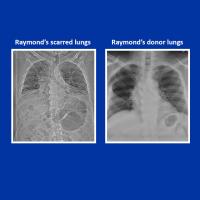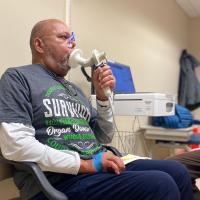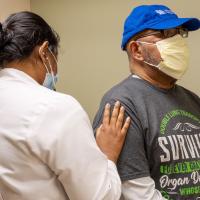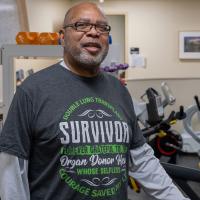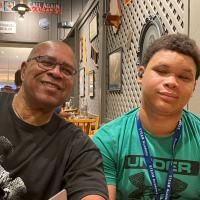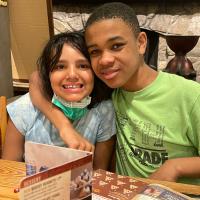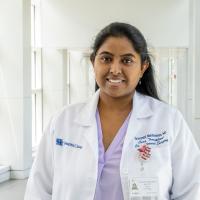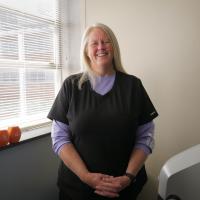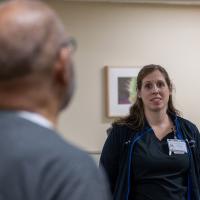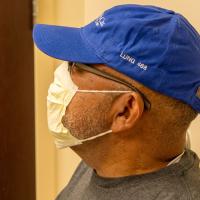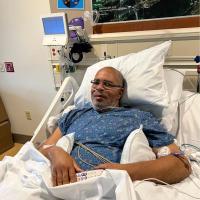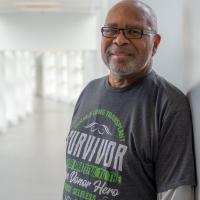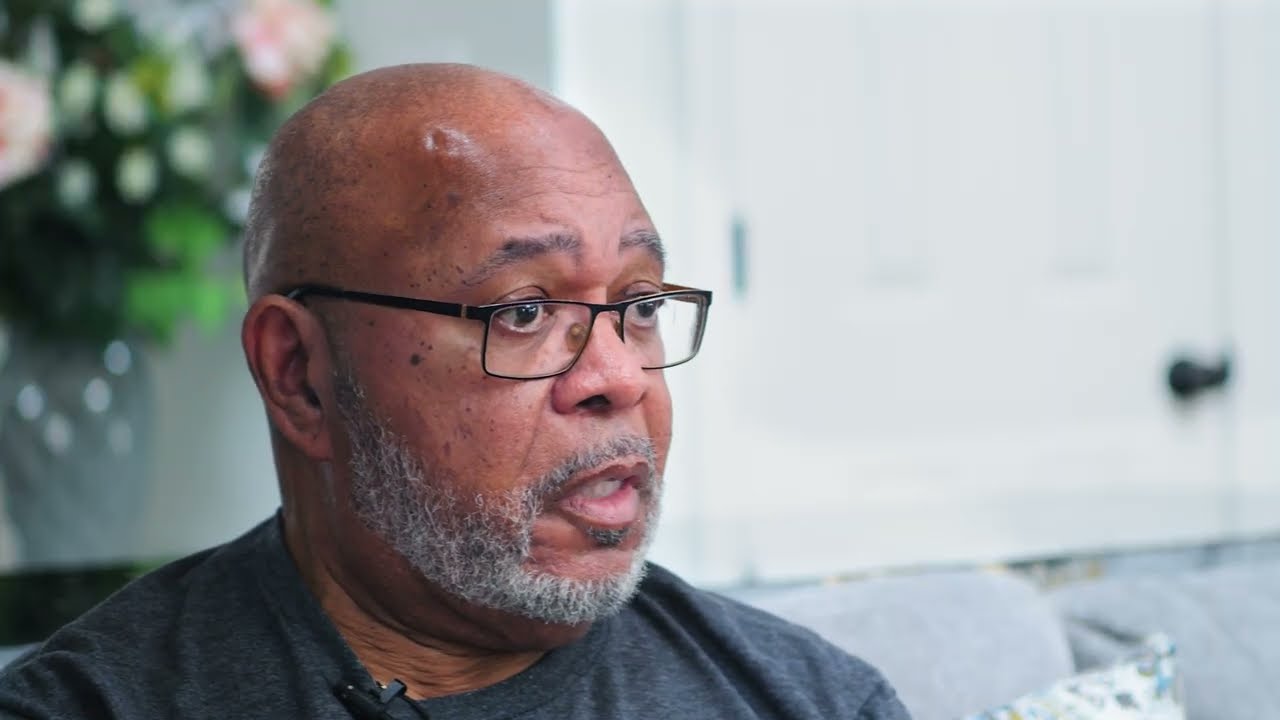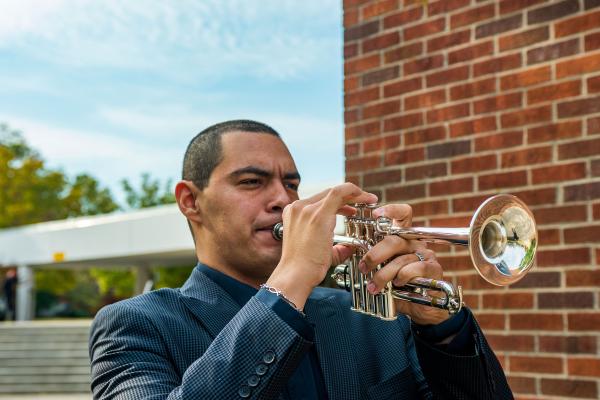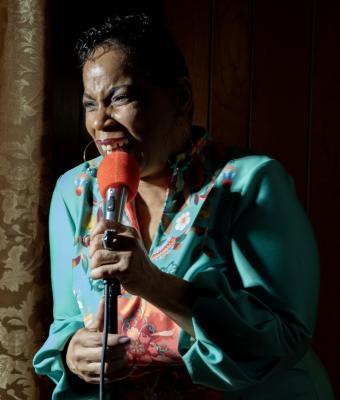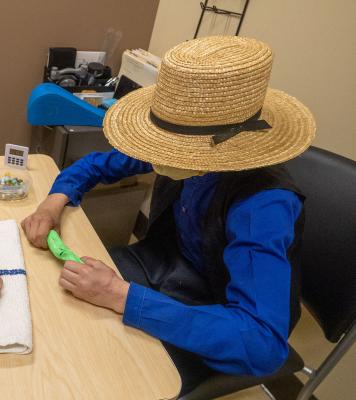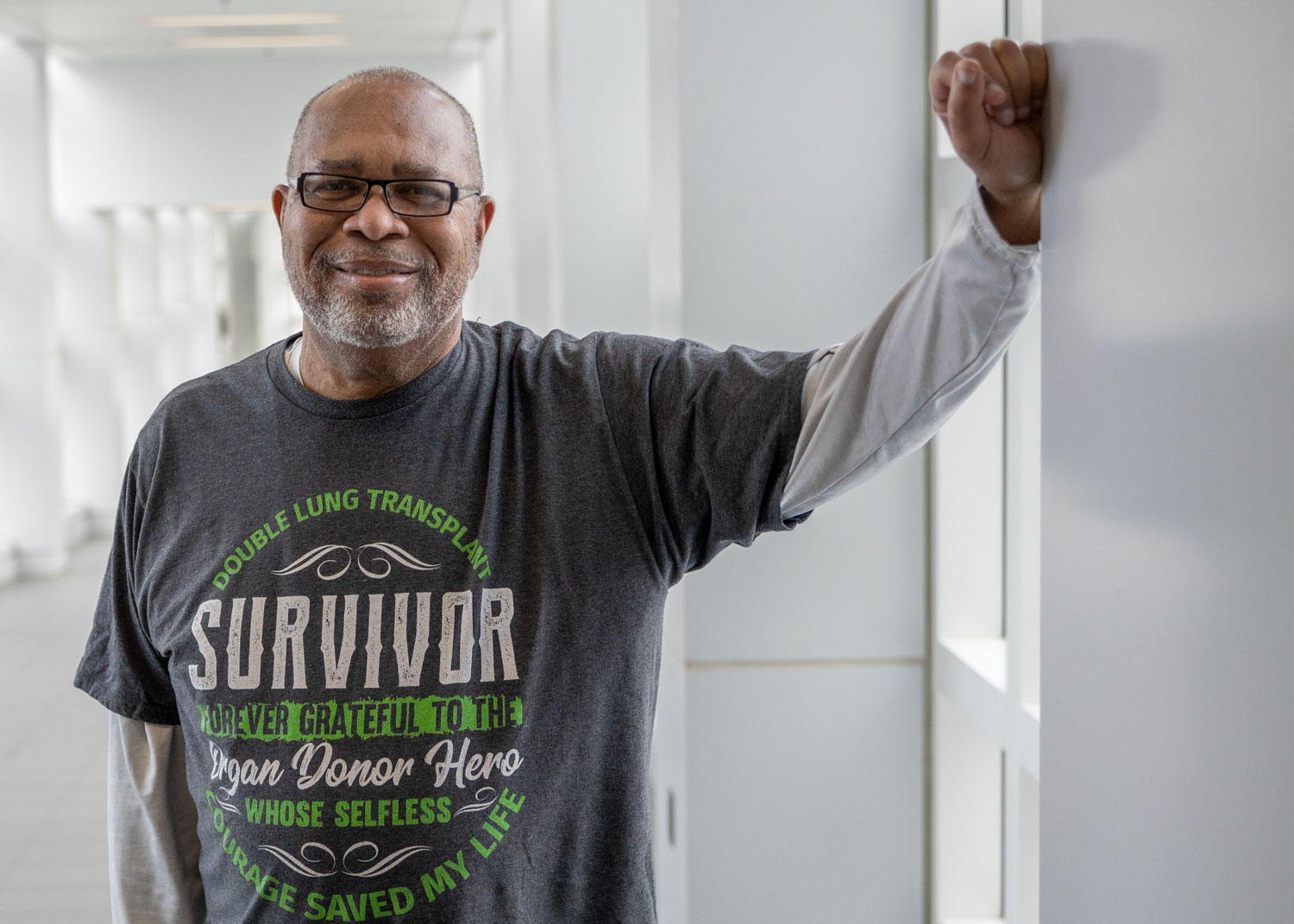
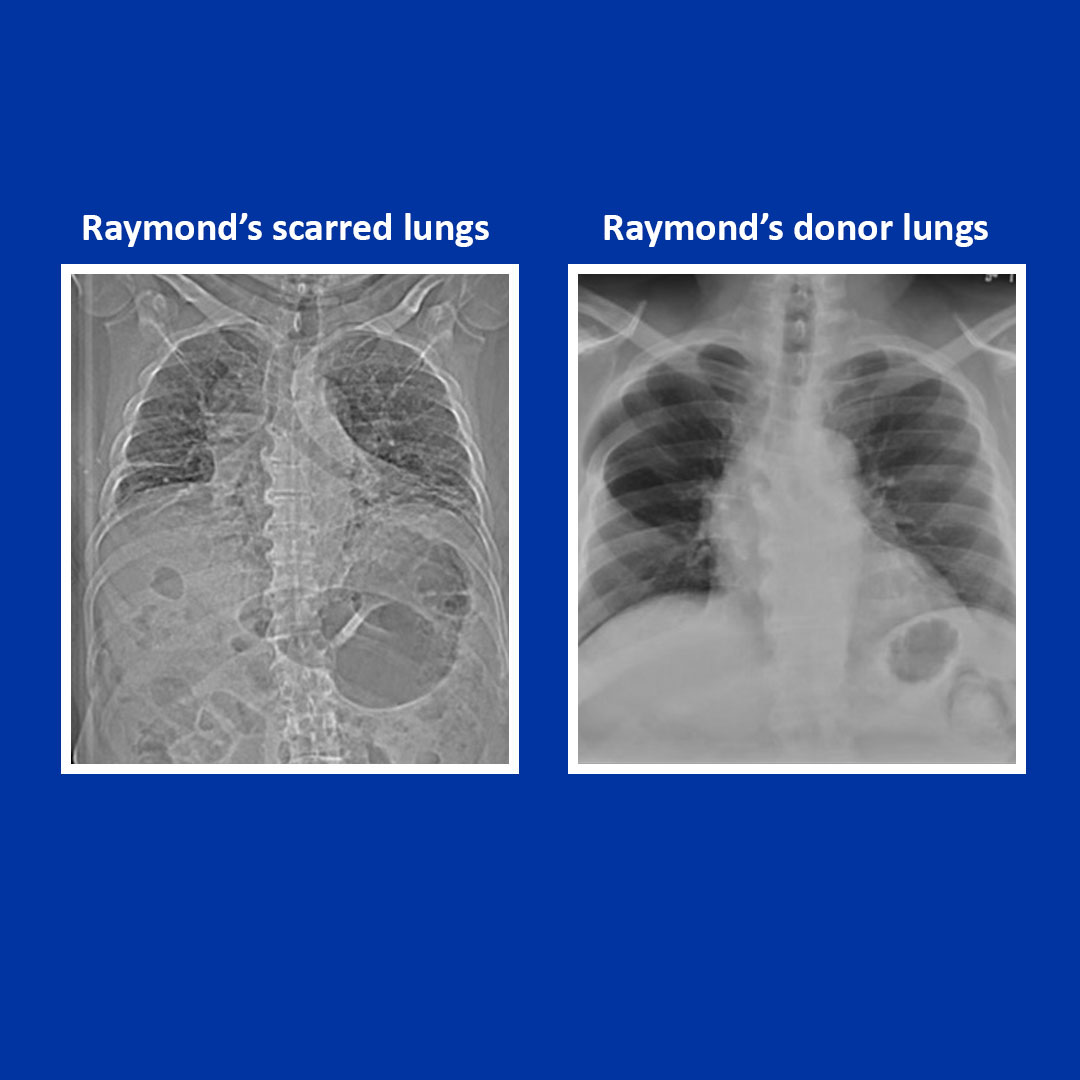
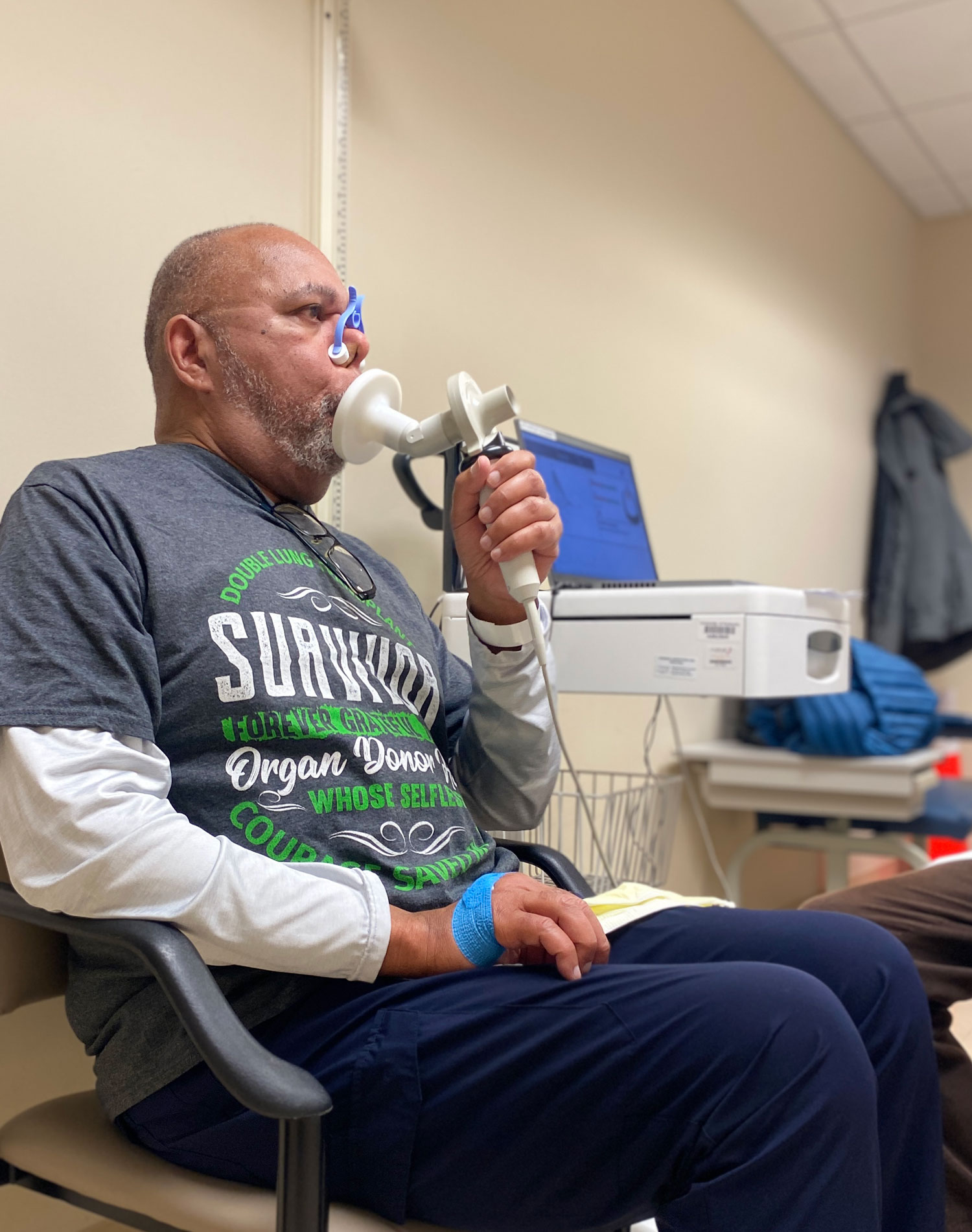
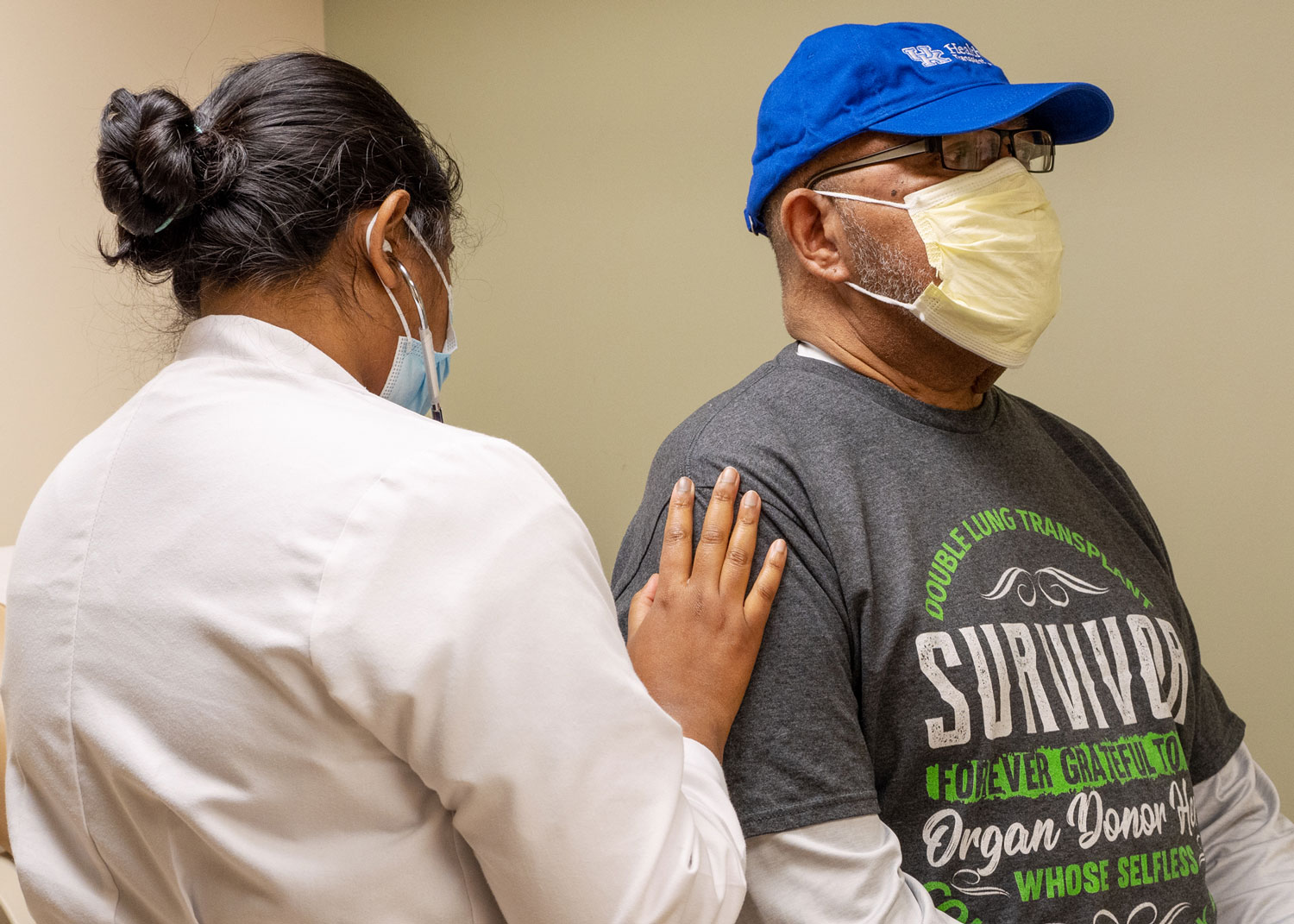
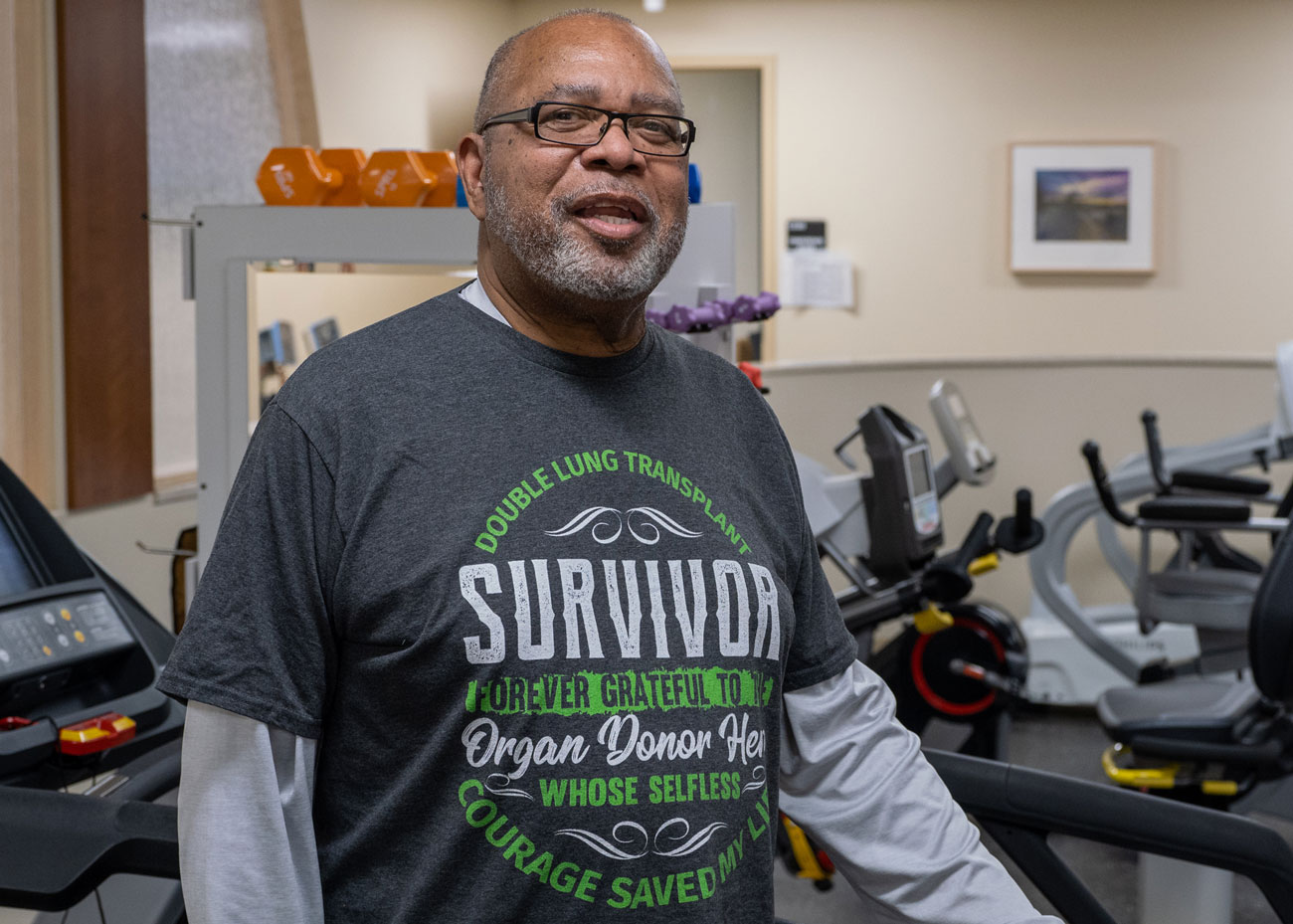

New Lungs,
Old Groove
In 2014, it became much harder for Raymond Cloud to breathe.
Raymond – a lifelong athlete who ran 15-20 miles a week, worked out with a trainer and enjoyed frequenting the dance floor – suddenly had to pause for air.
A June visit with his primary care physician led to a diagnosis of sarcoidosis, an inflammatory disease most often affecting the lungs that causes the formation of tiny cell clusters called granulomas. By August, X-rays showed Raymond’s lungs were scarring. He was “ate up” with idiopathic pulmonary fibrosis, and its effects were irreversible.
Raymond’s son died that same month. Within three months, the 58-year-old’s entire outlook on life was shaken.
“I lost a son, I lost my health,” Raymond said. “I sort of started feeling worthless, useless, because I worked all my life. I’m thinking, ‘Man, what am I gonna do here?’”
Raymond’s primary care doctor, who treated him for two decades, encouraged him to “live life to the fullest” due to the severity of his condition. He took that to heart, selling his home and traveling across the country with a friend before settling down for about four years in Florida.
In 2019, he decided to return to Bell County, where he grew up, to be closer to family as his condition worsened to the point of needing an in-home oxygen concentrator, a medical device providing extra oxygen. As the COVID-19 pandemic started in 2020, Raymond was ready to throw in the towel.
“I was isolated and in a lot of despair,” he said. “I just knew, ‘You’re going to die down here. You’re going to sit here in this house, and you’re going to die.’”
Fate intervened, bringing Raymond back to Lexington and setting him on the path to a life-changing procedure.
‘I can’t do this’
After being divorced for 25 years, Raymond and his wife remarried in 2006 but in 2020 were living independently until three adolescent grandchildren came into their care. That prompted him to move back to Lexington.
Upon his return, Raymond began seeing a pulmonologist at UK HealthCare, and, for the first time, discussed a double lung transplant. It was something he’d never considered, but now he had three reasons to pull out all the stops. For the next year and a half, he underwent a slew of tests to determine his viability.
“We literally test each and every organ to make sure all the organs are working well, and that their body can survive this big surgery, which is a 10- to 12-hour surgery under general anesthesia,” said Dr. Sravanthi Nandavaram, medical director of UK HealthCare’s Lung Transplantation Program. “And we have a multidisciplinary transplant team that works with every patient to assess their needs, explain why they’re undergoing so many tests and prepare them for daily life following transplant.”
In preparation, Raymond worked to improve his lung capacity through the UK HealthCare Pulmonary Rehabilitation Clinic. He was skeptical at first.
“I kept thinking, ‘How do you do that?’ My lungs are scarred, you’re not gonna be able to do that,” Raymond said. “ … There were days where I’d say, ‘I can’t do this,’ but we were actually able to increase my lung capacity by five percent. That was through muscle building, stamina building, all the machines and things that they wanted me to do and the goals I set.”
Angela Steele, one of Raymond’s physical therapists, has more than 30 years of experience working with UK transplant patients and helped start the pulmonary rehab program. Because of Raymond’s previous activity level, he took to rehab in a way many patients don’t.
“I’m sure he saw his future as uncertain, but he still had that ability to make people laugh around him and to really work hard,” Angela said. “I was excited the first time I saw him because I knew he had good potential. And I was a little scared, because I was just hoping he would be able to get a transplant before it was too late.”
Raymond made his way onto the transplant list in December 2021. He figured he’d be waiting a while.
Doubt – sowed by years of systemic racism and ageism – had settled in, too.
“I kept thinking, ‘They’re not gonna let an old Black man like me live,’” Raymond said. “I’m not worthy of lungs.”
‘Life came back into me’
On March 18, 2022, Raymond received a call from Dr. Nandavaram, his transplant doctor. It was only the second time they’d spoken since he returned to Lexington. “Beautiful” donor lungs were on standby for Raymond.
The timing was cosmic: he’d just labored to make the short walk from the living room to his car. Raymond sat in the driver’s seat listening to Dr. Nandavaram describe the lungs’ quality and the next steps. Doubt crept in – he couldn’t help but ask her if he should do it.
“I don’t take any lung,” Dr. Nandavaram said. “I have certain criteria, and they have to go through that criteria. One of the questions that I ask myself is, ‘Will I take this to my family member?’ It’s a straightforward answer. Because if I have a question about it, I wouldn’t take it. And that’s how I tell patients so that they don’t have any doubts or won’t be concerned."
“I was afraid to say ‘yes,’” Raymond said. “She said, ‘If you were my father and these lungs were available for him, I would definitely recommend he take them.’ I got quiet, and she asked if I was still there.”
Raymond was saying a brief silent prayer. “I’ll do it,” he said.
Things moved quickly. A friend drove Raymond to the hospital within the hour. He’d read a lot about dry runs – when the “lungs are here” call comes but, upon further evaluation, they won’t work – and prepared himself mentally for that possibility.
When he arrived, it quickly set in that this was the real deal. He underwent surgery on March 18. He was alert for the first time afterward on March 20, lungs half his age successfully implanted.
Raymond at first was too preoccupied with yanking tubes out of his body to grasp his improved reality. It was more apparent to his loved ones.
“I remember them sitting there and they would go, ‘Wow,’” Raymond said. “To have your body do what it’s supposed to after about 12 years? Life came back into me. The physical part of it, but I could also feel the spiritual part of it.
“I’m so grateful to the donor and their family for their unselfish act,” Raymond said. “They gave me another chance at life.”
‘These TikTok dancers, they have nothing on me.’
Post-transplant, Raymond started noticing little things. While in rehab at Cardinal Hill, he was awed by his chest, rising with each breath as he shaved. Pre-surgery, he couldn’t be in a grocery store longer than 15 minutes without feeling winded. He’s gotten to watch a grandson blossom into a football star for Middlesboro High School.
It’s not been a cakewalk. Each day, Raymond takes 25-30 medicines, and he’s had to be hospitalized in the last year for kidney issues stemming from them. He’s dealing with osteoporosis and arthritis, partly due to age and partly due to the strain he put on himself as an athlete. Concerns over infections, including COVID-19, have kept him off the dance floor — at least publicly.
“If these walls could talk, especially with this Beyoncé Renaissance album?” Raymond said. “These TikTok dancers, they have nothing on me.”
The Pulmonary Rehab Clinic — the same one he was cynical about early on — became an even more empowering resource for Raymond post-transplant. He was determined to get back to the person he was before his original lungs failed him, and he embraced the ability of the providers there to help him achieve that goal.
One of Raymond’s goals was to be able to dance for 10 minutes without stopping.
“It’s all about the patient experience here,” said Steele, his physical therapist. “It is all about quality of life and what do you enjoy? What do you want to get back to? What is the driving force for the patient? It helps us determine what type of exercises we need to do or how we can improve the skill set that they have for the activities related to their goal.”
Raymond’s active lifestyle pre-illness has made a difference in every step of his journey, but particularly so in his post-transplant rehab visits. Aspiring to recreate that version of himself is as motivating mentally as it is physically.
“I looked forward to going there,” Raymond said. “Jennifer (Cunningham) and Angela, especially – those two women sort of whipped me into shape. … You never could have told me it would be like that. It was a great relationship that we built prior to surgery, and it continued on after that.”
Some days are better than others, but they’re all a drastic improvement over his pre-transplant condition. A little more than a year removed from surgery, Raymond is confident the best is yet to come.
“It’s just a matter of time before my body and mind meet each other,” Raymond said. “It’s gonna be on.”

